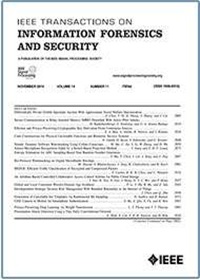GNSS Jammer Localization and Identification With Airborne Commercial GNSS Receivers
IF 6.3
1区 计算机科学
Q1 COMPUTER SCIENCE, THEORY & METHODS
IEEE Transactions on Information Forensics and Security
Pub Date : 2025-03-10
DOI:10.1109/TIFS.2025.3550050
引用次数: 0
Abstract
Global Navigation Satellite Systems (GNSS) are fundamental in ubiquitously providing position and time to a wide gamut of systems. Jamming remains a realistic threat in many deployment settings, civilian and tactical. Specifically, in drones sustained denial raises safety critical concerns. This work presents a strategy that allows detection, localization, and classification both in the frequency and time domain of interference signals harmful to navigation. A high-performance Vertical Take Off and Landing (VTOL) drone with a single antenna and a commercial GNSS receiver is used to geolocate and characterize RF emitters at long range, to infer the navigation impairment. Raw IQ baseband snapshots from the GNSS receiver make the application of spectral correlation methods possible without extra software-defined radio payload, paving the way to spectrum identification and monitoring in airborne platforms, aiming at RF situational awareness. Live testing at Jammertest, in Norway, with portable, commercially available GNSS multi-band jammers demonstrates the ability to detect, localize, and characterize harmful interference. Our system pinpointed the position with an error of a few meters of the transmitter and the extent of the affected area at long range, without entering the denied zone. Additionally, further spectral content extraction is used to accurately identify the jammer frequency, bandwidth, and modulation scheme based on spectral correlation techniques.求助全文
约1分钟内获得全文
求助全文
来源期刊

IEEE Transactions on Information Forensics and Security
工程技术-工程:电子与电气
CiteScore
14.40
自引率
7.40%
发文量
234
审稿时长
6.5 months
期刊介绍:
The IEEE Transactions on Information Forensics and Security covers the sciences, technologies, and applications relating to information forensics, information security, biometrics, surveillance and systems applications that incorporate these features
 求助内容:
求助内容: 应助结果提醒方式:
应助结果提醒方式:


